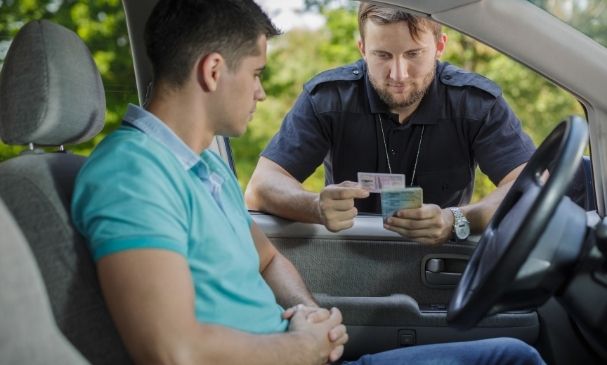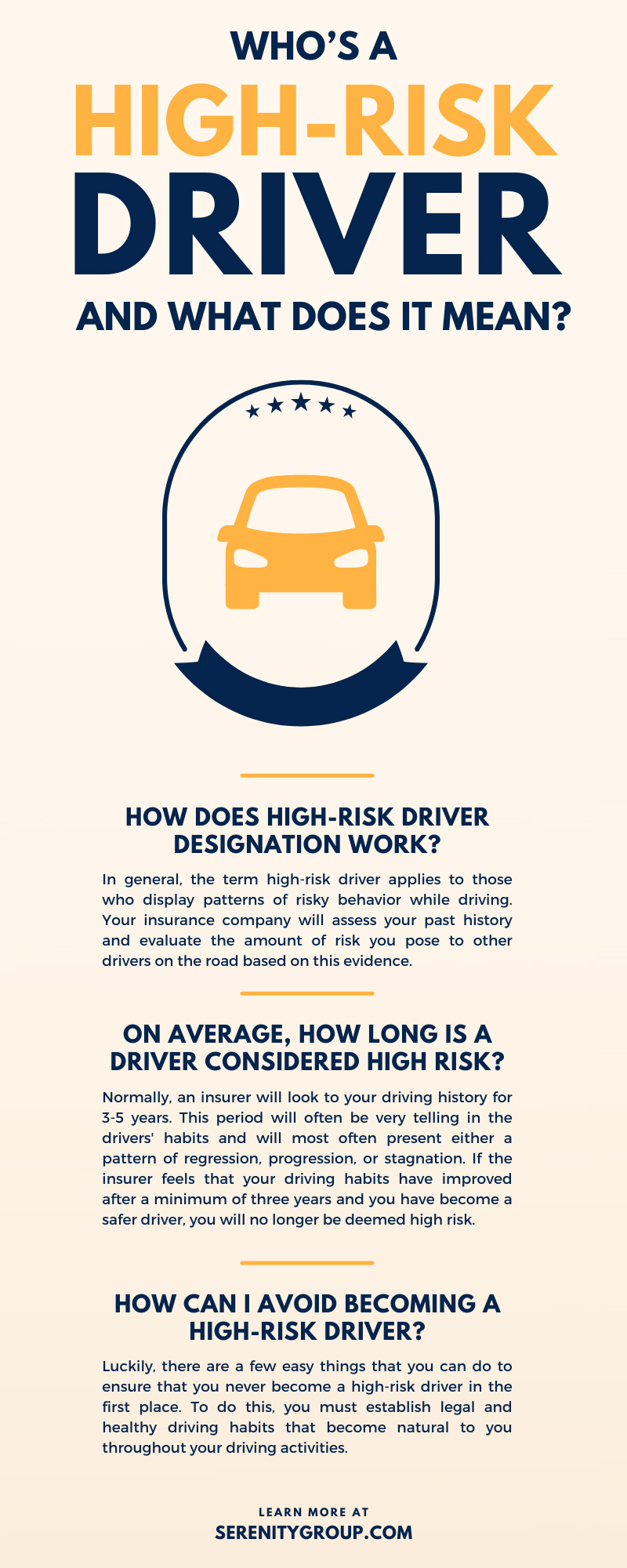Who’s a High-Risk Driver and What Does It Mean?

When it comes to auto insurance, sometimes there will be designations that reflect your insurance company’s level of confidence in you. These terms can cause a lot of confusion, as they may not fit the situation’s circumstances. To help clear this up, here is how to tell who’s a high-risk driver and what that term can mean in the first place. This article will cover:
- Definition and examples of a high-risk driver.
- How high-risk driver designation works.
- How long a driver is considered high risk.
- The different policies for high-risk drivers.
- Common misconceptions of SR22 insurance.
Definition and Examples of a High-Risk Driver
The term high-risk driver can refer to many different aspects of unsafe driving. This is because the term “high risk” is not a formal legal term or insurance classification with strict rules surrounding the usage. Even so, the term is useful to insurance companies, as it gives a clear and concise designation to those who may not be responsible enough to drive. In general, a high-risk driver is someone with:
- Multiple major traffic violations. These can be anything from multiple speeding tickets to a DUI conviction.
- Multiple and frequent minor violations in a short period.
- Multiple accidents in the past three to five years of which you are at fault.
- Driving without the proper insurance or not having enough insurance.
- Driving violations that led to you accumulating enough points on your license to have it taken away.
It’s important to note that while insurance companies will charge higher rates for younger drivers due to the high risk their behavior often poses, they still will not be considered “high-risk.” To help differentiate between new drivers and high-risk drivers, here are some of the most common behaviors of high-risk drivers:
- Drinking and driving
- Texting and driving
- Not wearing a seatbelt
- Speeding 10 or more miles over the speed limit.
Obviously, if someone is exhibiting these behaviors, it’s only a matter of time before they get in a car accident or receive a moving violation.
How Does High-Risk Driver Designation Work?
In general, the term high-risk driver applies to those who display patterns of risky behavior while driving. Your insurance company will assess your past history and evaluate the amount of risk you pose to other drivers on the road based on this evidence. This means that there must be a recurring and significant trail of offenses to catch the attention of your insurance provider. However, this pattern must be significant enough to warrant this designation in the first place. As a result, even if you have a couple of speeding tickets and your insurance rates raised, you will still not be deemed a ‘high risk’ driver. It will take much more of a pattern of uncaring and reckless behaviors that will cement this high-risk label onto you.
It’s important to keep in mind that this ‘high risk’ designation is only for insurance companies to help them sort out policy coverage levels. If you get pulled over, the police officer will have no knowledge of your label, although they will still be able to infer from your ticket history that you may be a high-risk driver. Beyond this, this label will never show up in regard to job searches, court proceedings, or any other public records.
On Average, How Long Is a Driver Considered High Risk?
Normally, an insurer will look to your driving history for 3-5 years. This period will often be very telling in the drivers’ habits and will most often present either a pattern of regression, progression, or stagnation. If the insurer feels that your driving habits have improved after a minimum of three years and you have become a safer driver, you will no longer be deemed high risk. After all, traffic violations will fall off your record after a while anyway.
You should note that in some cases, your insurer can reward you for attending specific traffic safety and defensive driving classes to clean up your driving record. Eventually, these classes can even get you to qualify for a safe driver discount once your record has been cleared up.
How Can I Avoid Becoming a High-Risk Driver?
Luckily, there are a few easy things that you can do to ensure that you never become a high-risk driver in the first place. To do this, you must establish legal and healthy driving habits that become natural to you throughout your driving activities. Some of the best habits to establish include:
- Eliminating distractions
- Practicing defensive driving
- Make on-time insurance payments
- Avoid driving under the influence
- Be aware of your surroundings
The Different Policies Available for High-Risk Drivers
In the case you are a high-risk driver, there are a few different policies available to you. The most common policy, the SR22 high-risk insurance, ensures that the certificate holder carries the minimum amount of liability insurance necessary to drive legally. The three different types of SR22 certificates enable the holder to drive their own car:
- Owner: An owner policy is required for anyone who is the owner of both the car and insurance policy for the car.
- Non-owner: Even if you don’t have your own car when you drive, you still must be insured. Luckily, a non-owner policy is oftentimes less expensive than the other policies.
- Owner/operator: This type of certificate covers vehicles that are owned by the driver and any other vehicles that are in the owner’s name. This can come in handy if you drive several cars.
We hope that this article has helped you identify who’s a high-risk driver and what the high-risk designation means. While these terms are somewhat confusing, it’s important to know what they mean and how high-risk designation arises. Knowing these factors will help you understand what behaviors to avoid, such a designation. If you need SR22 or FR44 insurance quotes, contact Serenity Group today. Our rates and customer service is superb!


Recent Comments